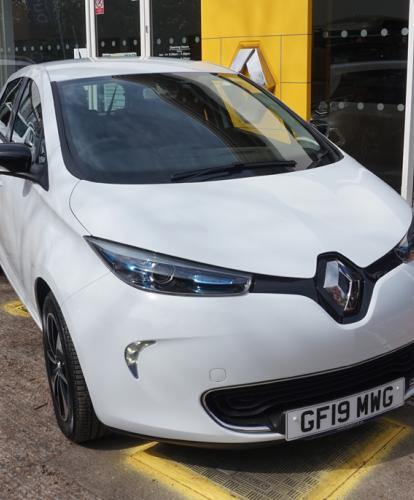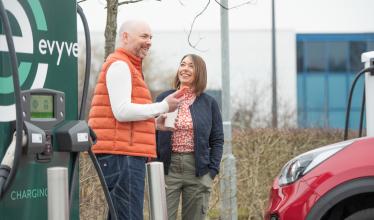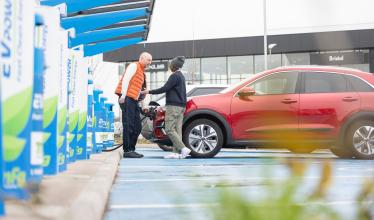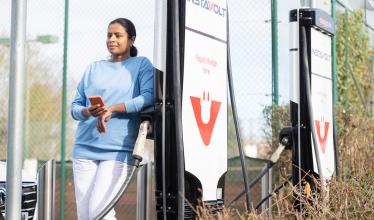Zapmap is keeping up to date with running a Renault Zoe as an every day car, with all aspects of EV ownership covered in this long-term review – from purchase to day-to-day life. Not a press car, but bought and run by our writer, Patrick Fuller’s own money, we’ll track how the Zoe does over the coming months. Read on to see how Patrick gets on.
Renault Zoe R110 first impressions
It’s hard to believe that the Renault Zoe has been on sale since 2013. In six years, just over 9,000 have been sold in the UK according to the company, helping to make Renault the leading battery EV manufacturer in Europe (it sold 48,000 Europe wide in 2018, which represented 22 per cent of the battery EV market).
The Zoe is a good choice then. It has been around long enough for Renault to iron out glitches, benefited from improvements in battery performance including a major upgrade to 41 kWh in 2016, and has a dealer network that, to an extent, is familiar with electrification.
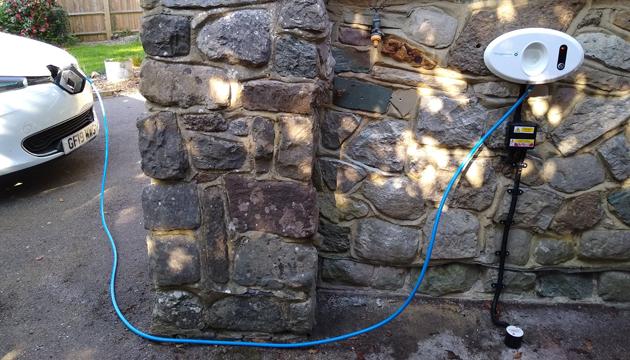
Our motivation for choosing the Zoe was more prosaic: there are some great deals around at the moment, making it relatively affordable as a starter EV. In fact, the deals are so good that we were persuaded to buy new despite originally planning to get a used one – where, again, there are real bargains to be found.
What Car? recently gave the Zoe the ignominious crown of the UK’s second-most depreciating car (behind the, er, Fiat Doblo XL), retaining just 26.6 per cent of its value after three years. That means used Zoe’s, often with low mileages, are fantastic value for money.
But that does not tell the whole story. As What Car? acknowledges, the calculation is based on list price which does not take into account the £3,500 Government grant or money-off incentives from Renault. Once you put that into the mix, the Zoe retains a more respectable, if hardly stellar, 33 per cent of its value, compared with other low carbon cars such as the Toyota Prius hybrid, which holds as much as 60 per cent.
The truth is, though, that we went for a new car because we liked the idea of a full warranty, a brand new battery, a homecharger fitted for free and those nice new alloys that Renault introduced a couple of years ago.
After shopping around a bit, including a call to one of the UK’s leading Zoe retailers, DSG in Morecambe where some of the best deals are to be found, we bought a Zoe Z.E. 40 Dynamique Nav R110 from our local dealer, Hendy Renault in Tunbridge Wells, Kent. They had a demo car on site and did a good job of answering our questions in a straightforward way, giving us an accurate estimate of the real-world range of the car of about 150 miles rather than the official WLTP figure of 186 miles.
We took out a PCP finance scheme over three years with a deposit of £5,400, monthly payments of £131 plus £69 a month for battery rental, and an optional final payment after three years of £4,750.
Overall, that’s a discount of more than £7,500, made up of Government grant (£3,500), Renault finance contribution (£3,075) and dealer discount (£1,250). For a car that retails at £21,275, that’s a pretty impressive deal – and we are not talking about a product that gets bad reviews.
Quite the opposite, in fact: the motoring media is enthusiastic about the Zoe, including ratings for various models of 4 and 4.5 stars from our very own Next Green Car; and most owners seem to love it. It has a high level of standard spec, including climate control and Renault’s best R-Link multi-media nav system, plus other premium touches that would not look out of place in a £30,000 car.
The discount reflects the challenge of selling EVs to a reluctant public, but also the strength of competition from conventional cars, many of which are also heavily discounted in today’s weak car market and offer more features and performance.
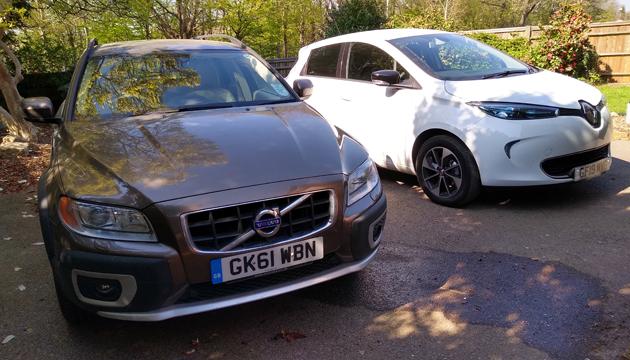
Bear in mind that the expensive battery – probably £8,000 of the car’s manufacturing cost compared with about £2,000 for a mass-production engine – means that Renault is losing money on every Zoe sold. That is changing rapidly as battery technology improves, but for now the car is startlingly good value for money, even with the £69 per month battery rental that must be paid by whoever owns the car for the first seven years, underpinned by a guarantee that the battery will remain at least 65 per cent efficient.
The other important step to ownership was getting a charging point installed at our home. Renault subcontracts this to BP Chargemaster, which helps you to claim your OLEV home installation grant that, with a contribution from Renault, means installation is free.
Or so I thought. The BP Chargemaster process was pretty clunky and after some to-ing and fro-ing I discovered that I needed an isolation switch on my electricity main before the charge point could be fitted. This, BP Chargemaster made it clear, was my problem, not theirs – and it turned out to be a £200 problem (your electricity supplier may fit one for a lot less, but in our case Good Energy said it would be two months before they could do it).
The other challenge was running the cable from our fuse box under the stairs to the outside wall. BP Chargemaster told me that they would only use a direct route using ugly trunking along our skirting boards. I had flashbacks to having our satellite dish installed – how quickly can the installer get in and out.
In the end, we found an electrician to run the cable under the floor, which cost another £175, making the total extra cost of installation £375. The point here is not the complications of the installation – that is always going to happen with a major electrical upgrade – but the way that BP Chargemaster made it my problem rather than theirs. If you are struggling to sell a new product, then the last thing you need is early adopters telling everyone they meet that getting the charge point in was stressful.
The process took six weeks from start to finish, which meant the car arrived before we had a means of charging it, so thankfully my dealer Hendy lent me a three-pin plug adaptor to use in the meantime. Although it is painfully slow – 20 hours to go from 15 per cent battery to full – at least it meant we could use the car. We have decided to buy an adaptor of our own as emergency backup, an eye-watering £500, although discounted to £350 by Hendy. Thankfully, the insurance with full no-claims is a surprisingly low £180 from Liverpool Victoria, whose policy includes recovery to our home if the battery runs out without losing our no claims.
All of which leads us to the exciting bit: living with an electric car. So far, we are loving it, both for its frugality – the equivalent of £1.50 a gallon – and its no-noise refinement. Like a reformed smoker, I now tut when a diesel drives past, although (full disclosure) we are keeping our Volvo diesel estate for now. We will be writing regularly about our Zoe, so please share your EV ownership experiences for future reports.
About the author
Patrick Fuller spent three years as editor of Autocar and two as deputy editor of What Car? He oversaw the automotive division of Haymarket Consumer Media for 10 years, which included brands such as Autocar, What Car?, PistonHeads and Classic & Sports Car. He is now a digital consultant to the car industry, focusing on car buying and future mobility.
